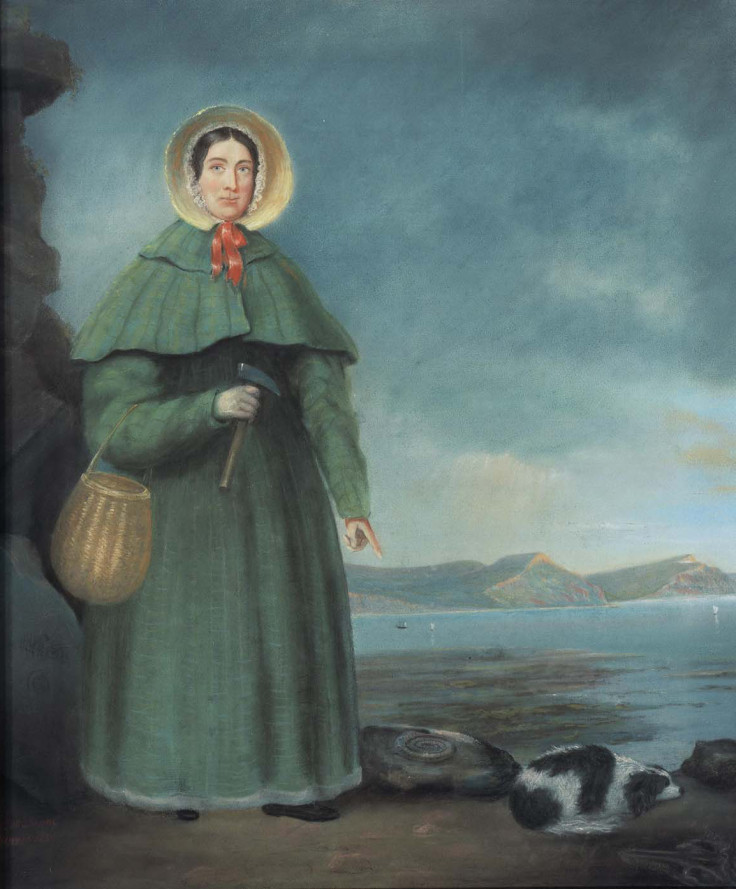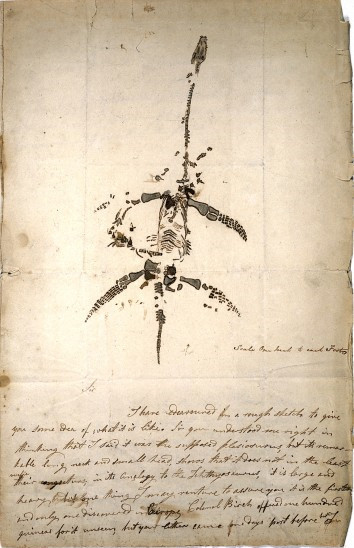Fossil Hunter Mary Anning Honoured by Google Doodle: Facts About British Palaeontologist

The 215th anniversary of British fossil hunter Mary Anning is being celebrated by Google Doodle today. To mark the occasion, IBTimes UK looks back at the woman whose findings helped develop new theories about prehistoric life and extinction.
Born in Dorset, England on 21 May 1799, Anning survived a lighting strike when she was 15 months old. According to locals, after the incident, Mary started developing curiosity and acute intelligence, characteristics that would accompany her for the rest of her life.
Mary and her brother Richard used to go with their father to collect fossils on the coastal cliffs around Lyme Regis, part of a geological formation known as the Blue Lias: one of the richest fossil locations in Britain. Mary's father would sell the fossils found on the cliffs to tourists.
After her parents' death, Anning kept collecting and selling fossils. Her primary stock in trade consisted of invertebrate fossils such as ammonite and belemnite shells and, sometimes, vertebrate fossils.
Collecting fossils was very risky, especially during winter when the cliffs became slippery. Mary almost died in October 1833, in a landslide that buried her black-and-white terrier.

As Anning continued to make important findings, her reputation grew. At the age of 27, she had managed to save enough money to purchase a home where she inaugurated her shop, Anning's Fossil Depot.
The fossil business had become important enough that her move was covered in the local paper. Many geologists and fossil collectors from Europe and America visited Anning at Lyme.
Anning died from breast cancer at the age of 47 on 9 March 1847. Charles Dickens wrote an article about her life in February 1865 in his literary magazine All the Year Round, in which he emphasised the difficulties she had overcome, especially the scepticism of her fellow townspeople.
In 1999, on the 200th anniversary of her birth, an international meeting of historians, palaeontologists, fossil collectors, and others interested in Anning's life was held in Lyme Regis.
In 2009, the Royal Society invited a panel of experts to produce a list of the ten British women who have most influenced the history of science. They included Anning in the list.
Anning's famous findings include the skeleton of an Ichthyosaurs found in 1811, and a partial skeleton of a marine reptile discovered in 1820.
Her discoveries became key pieces of evidence for extinction theories. Until the early 1820s it was still believed by many that just as new species did not appear, so existing ones did not become extinct.
Anning's findings, however, struck a blow against this theory.
© Copyright IBTimes 2025. All rights reserved.






















